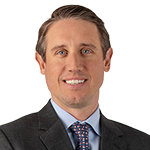INVESTMENT OBJECTIVE
The Fund aims to provide a high income with the potential for some capital growth over the long term.
Performance target: To outperform the Bloomberg US Aggregate Bond Index by 1.25% per annum, before the deduction of charges, over any 5 year period.
More
The Fund invests at least 70% of its assets in a multi-sector portfolio of US bonds of any quality, including high yield (non-investment grade) bonds and asset-backed and mortgage-backed securities, issued by governments, companies or any other type of issuer.
The Fund may also hold other assets including bonds of other types from any issuer, cash and money market instruments.
The Sub-Investment Adviser may use derivatives (complex financial instruments), including total return swaps, to reduce risk, to manage the Fund more efficiently, or to generate additional capital or income for the Fund.
The Fund is actively managed with reference to the Bloomberg US Aggregate Bond Index, which is broadly representative of the bonds in which it may invest, as this forms the basis of the Fund's performance target. The Sub-Investment Adviser has discretion to choose investments for the Fund with weightings different to the index or not in the index, but at times the Fund may hold investments similar to the index.
Less
The value of an investment and the income from it can fall as well as rise as a result of market and currency fluctuations and you may not get back the amount originally invested.
Potential investors must read the prospectus, and where relevant, the key investor information document before investing.
This website is a Marketing Communication and does not qualify as an investment recommendation.
ABOUT THIS FUND
- A dynamic, multi-sector income fund that seeks high, current income with lower volatility than a dedicated high-yield strategy.
- Leverages bottom-up, fundamental analysis to focus on identifying the best risk-adjusted returns across fixed income sectors.
- Typically holds 35% to 65% in below-investment-grade bonds.






